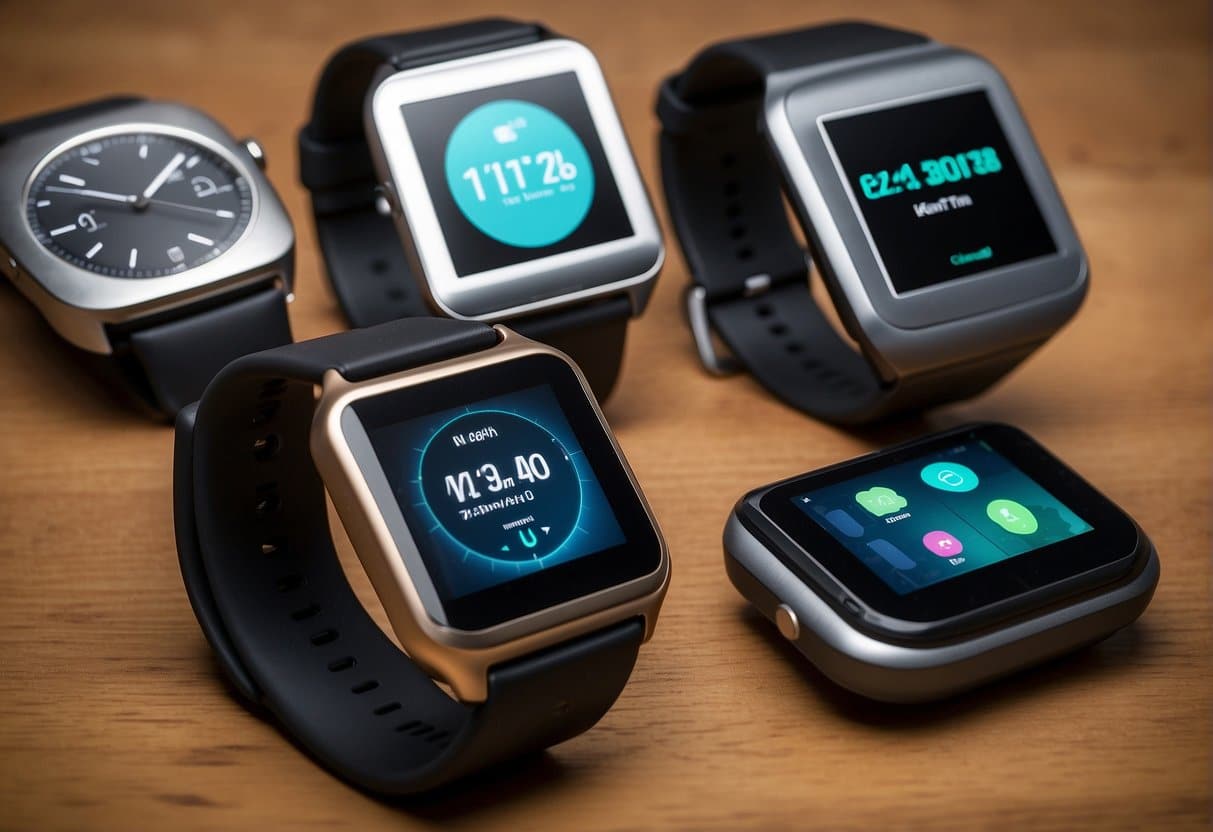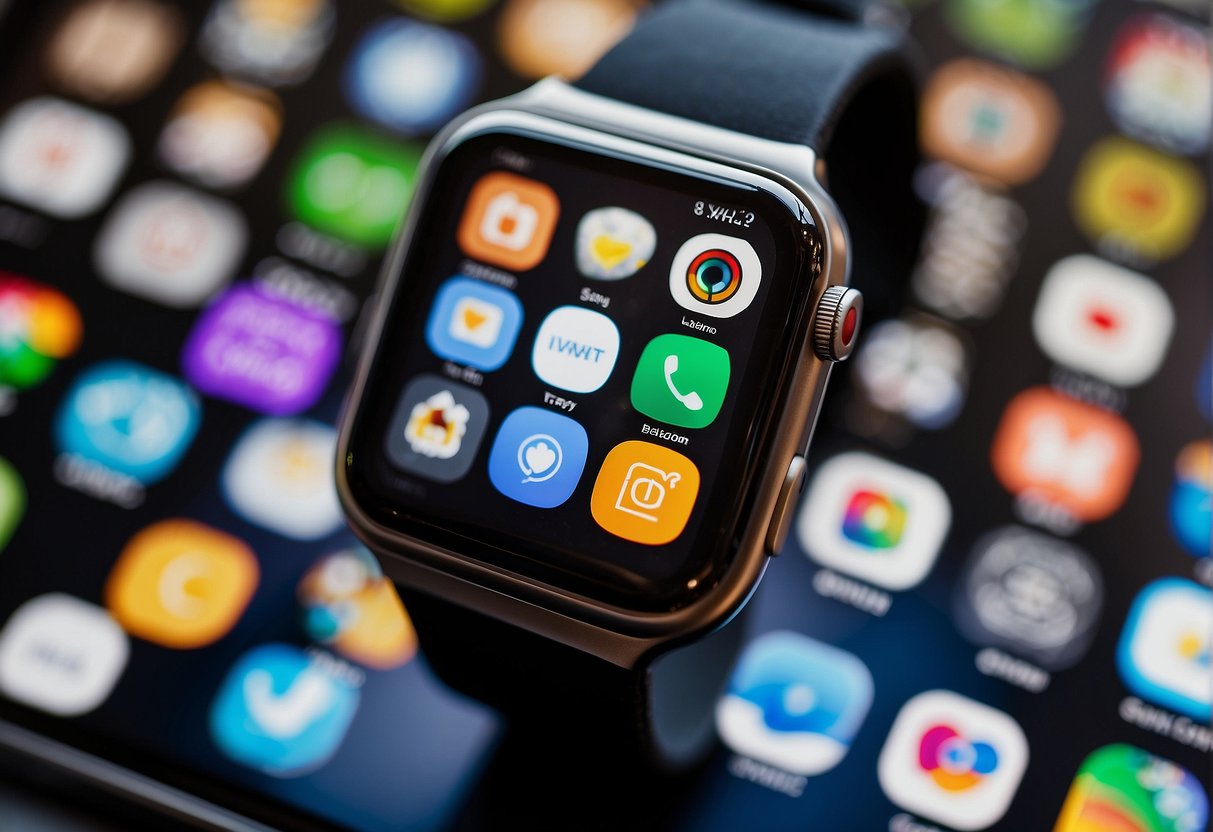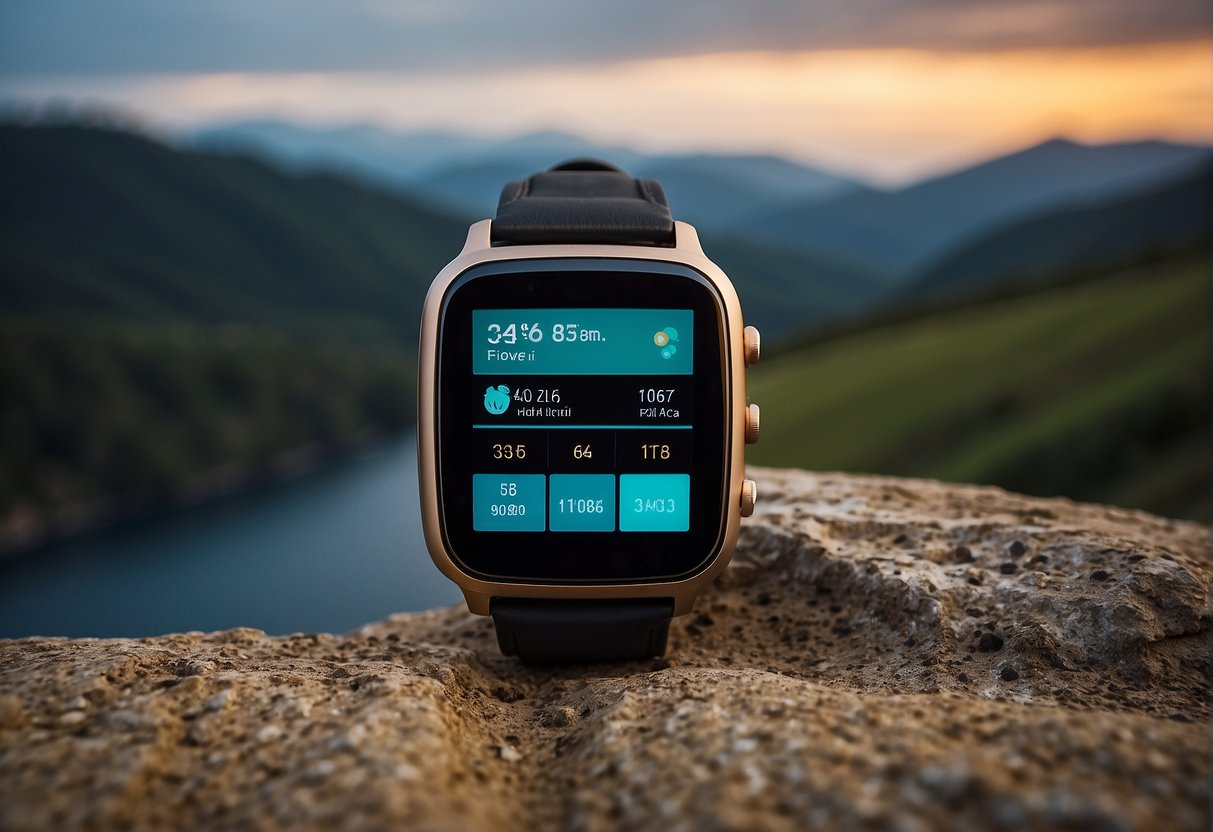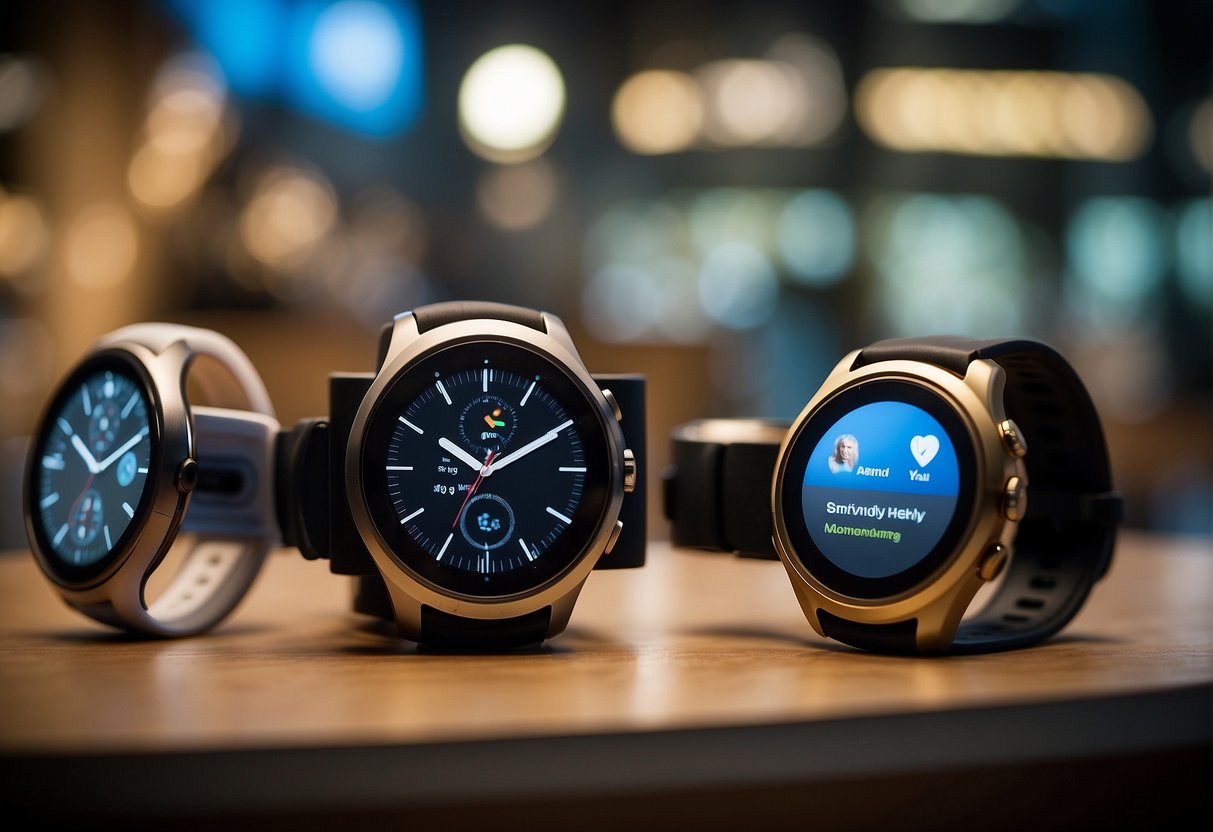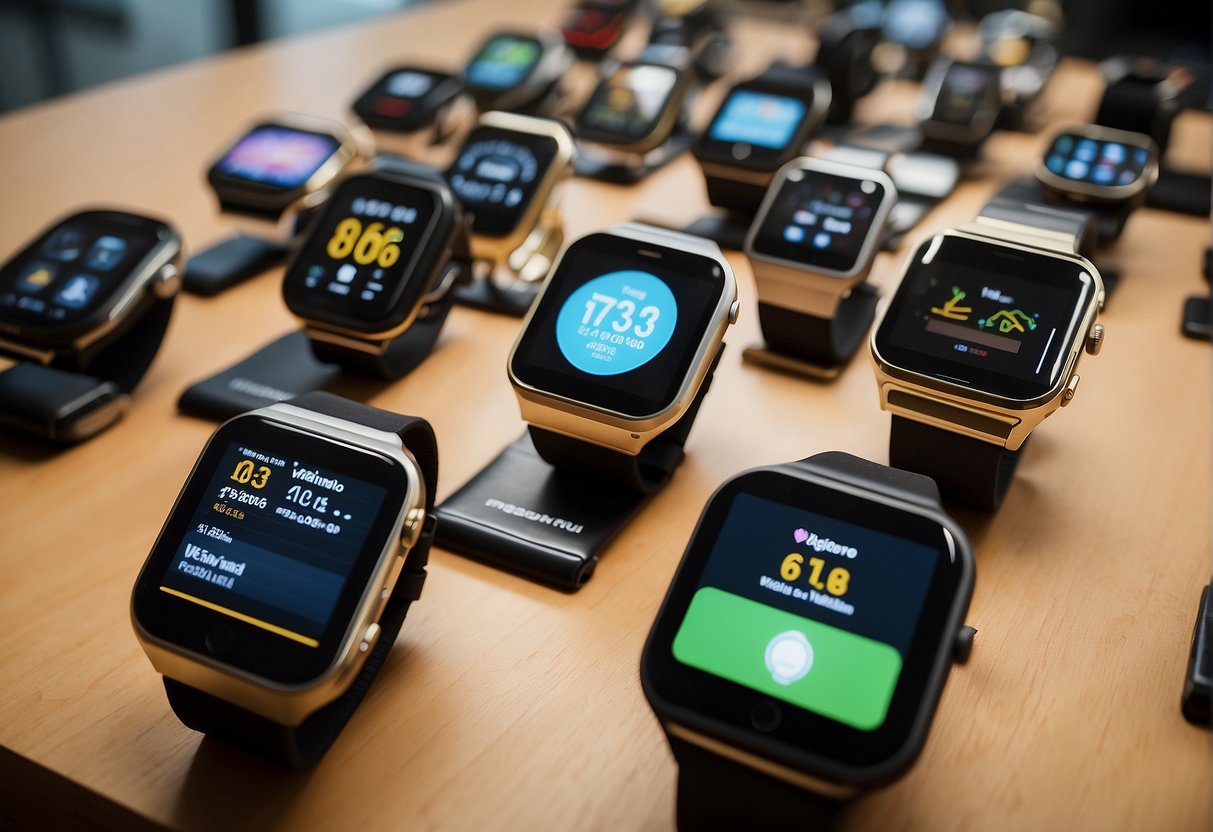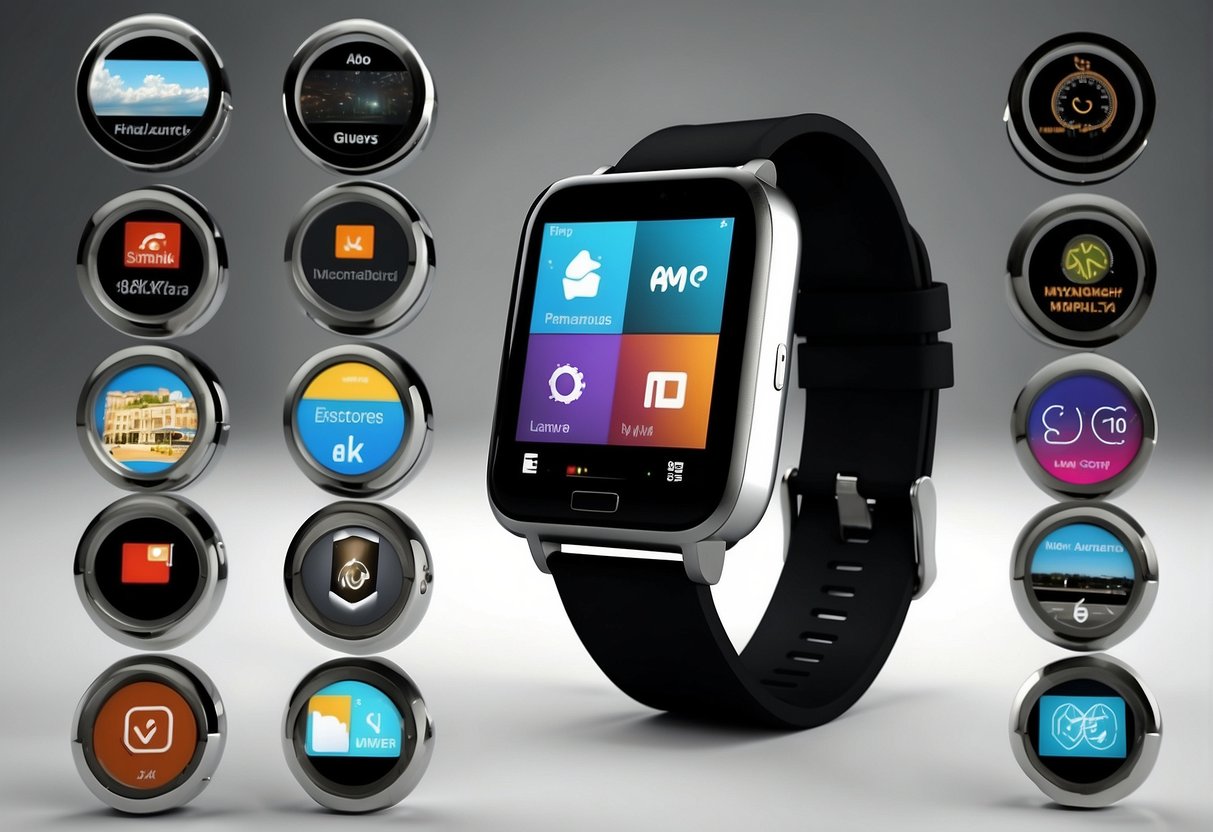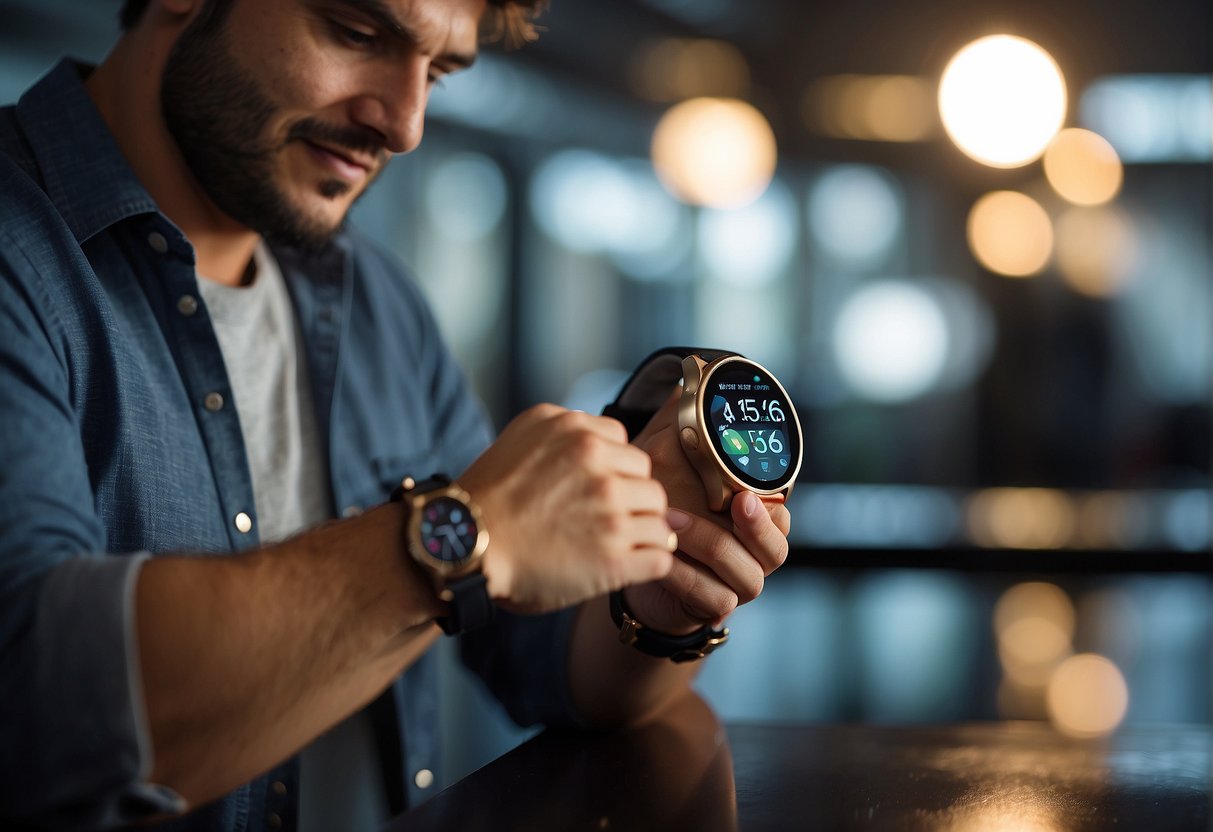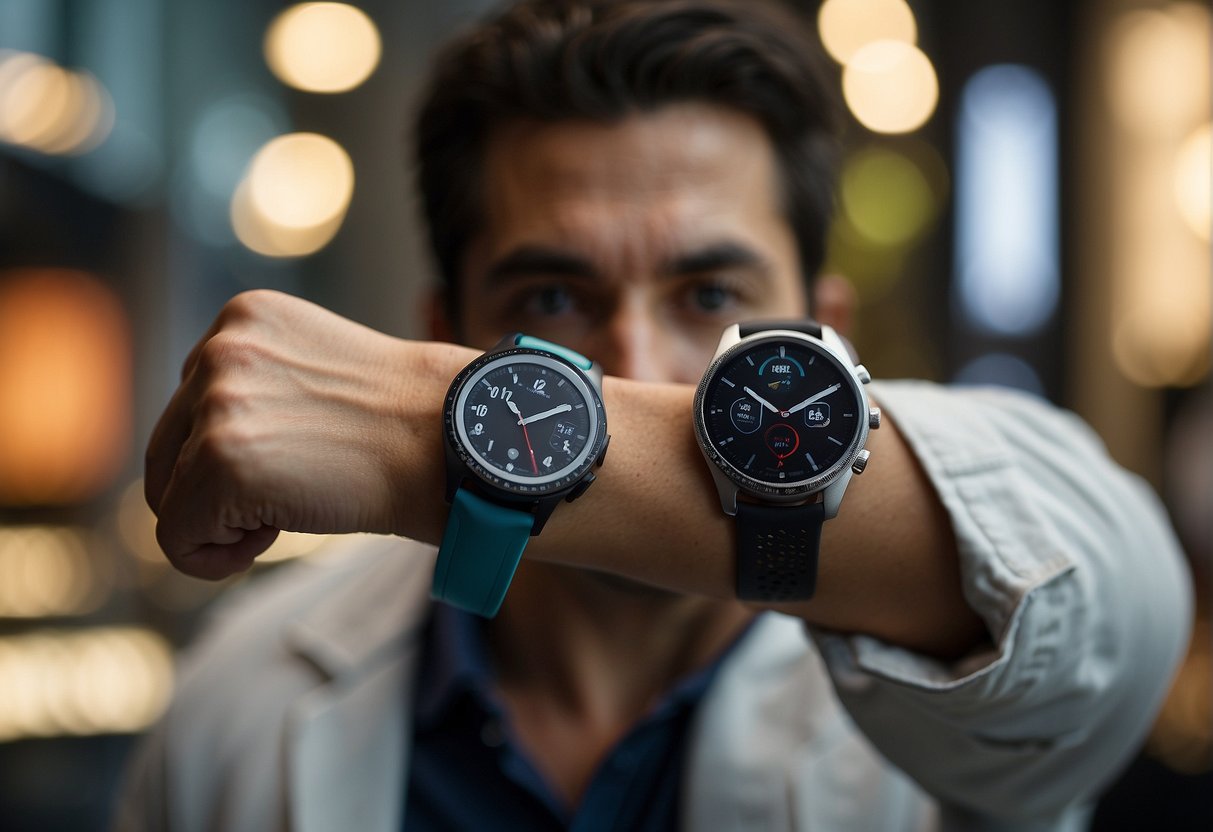Selecting the right smartwatch requires a comprehensive approach that incorporates not only your style preferences but also your technological needs. With the rising popularity of wearable technology, smartwatches have evolved to serve as extensions of our smartphones, and in some cases, as standalone devices with their own set of capabilities. From simplifying communication to monitoring health metrics, the features they offer can significantly enhance your daily life. Evaluating the array of options available in the market involves examining key elements such as design, functionality, and compatibility with your lifestyle.
The multitude of smartwatch options spans various price ranges, catering to budget-conscious consumers as well as those seeking luxury models. When choosing a smartwatch, it’s important to consider the device’s compatibility with your smartphone and your daily habits. Health and fitness enthusiasts might prioritize features like heart rate monitoring and GPS tracking, while others might look for a seamless connection to their phone’s notifications or app ecosystem. Additionally, aspects like battery life, charging efficiency, durability, and water resistance are essential considerations that vary significantly among different models and brands.
Key Takeaways
- A smartwatch should align with the user’s design preferences, technological requirements, and lifestyle.
- Important factors include device compatibility, health and fitness tracking features, and app integration.
- Also consider battery life, durability, and budget when selecting a smartwatch.
Understanding Smartwatch Basics
Before choosing a smartwatch, it is crucial to comprehend the primary categories they fall into and their operating system compatibility, as these factors dictate the smartwatch’s functionality with specific smartphones and their features.
Types of Smartwatches
There are primarily two types of smartwatches: Companion Smartwatches and Standalone Smartwatches. Companion smartwatches, such as the Apple Watch or Samsung Galaxy Watch, necessitate a connection to a smartphone to perform most functions. They are designed to act as a second screen for the phone, allowing users to receive notifications, reply to messages, and use apps without having to take out their smartphones.
On the other hand, Standalone smartwatches, like certain models of the Samsung Galaxy Watch, can operate with their own cellular connection, allowing users to make calls and send messages even without a smartphone nearby. They often include GPS and can download apps independently.
Operating Systems and Compatibility
The smartwatch’s operating system (OS) determines its compatibility with smartphones, available apps, and overall user experience. The primary operating systems are:
- Apple’s watchOS: Works exclusively with iPhone models. It is known for its seamless integration with the Apple ecosystem, providing access to a wide range of apps through the Apple App Store.
- Google’s Wear OS: Compatible with both Android and iPhone devices, though with limited functionality on the latter. Smartwatches like the Fossil Gen 5 and older generations of the Samsung Galaxy Watch exemplify Wear OS devices.
- Samsung’s Tizen: Found on newer Samsung Galaxy Watches, this OS works best with Samsung smartphones but also supports a broad array of Android devices and offers limited connectivity to iPhones.
Choosing the right smartwatch requires matching the OS with the user’s smartphone for optimal compatibility. For example, someone with a Samsung smartphone might select a Samsung Galaxy Watch for the best experience, while an iPhone user would typically opt for an Apple Watch.
Design and Display
When selecting a smartwatch, one needs to consider the design’s impact on comfort and the display technology for clarity and readability under various conditions.
Materials and Build
Smartwatches are crafted from a variety of materials, affecting both their aesthetics and durability. Common materials include:
- Aluminum: Lightweight and corrosion-resistant, it offers a balance between durability and cost.
- Stainless Steel: Heavier and more premium-feeling, it’s chosen for its higher scratch resistance.
- Titanium: Combining lightness and strength, this premium material is both durable and comfortable.
- Plastic or Composite: Often found in sportier models due to its lightweight and inexpensive nature.
The build quality also dictates the smartwatch’s comfort on the wrist. A well-designed smartwatch should not pinch the skin or cause discomfort even when worn for extended periods. Pay attention to the:
- Wristband: Silicon, leather, or metal, the choice of wristband material influences both comfort and style.
- Bezel: The bezel, which frames the display, should be minimal to maximize screen space without adding unnecessary bulk.
Screen Technology
The quality of the display significantly impacts the user experience. Two prevalent screen technologies in smartwatches are:
- OLED: Known for deep blacks and high contrast ratios, resulting in vibrant visuals and low power consumption when displaying true black.
Feature Benefit Deep black levels Enhanced readability and visual richness High contrast ratio Crisp text and images, even in bright light Thinner displays Sleeker watch design - AMOLED: An advanced form of OLED, with each pixel generating its own light, providing enhanced color accuracy and better viewing angles.
Feature Benefit Active-matrix Faster refresh rates and lower power usage Wide color gamut True-to-life hues, important for visibility Flexibility Contributes to a wider range of designs
Displays can also mirror the appearance of a traditional watch with always-on faces and subtle notifications to maintain the elegance of classic timepieces while offering smart functionality.
Health and Fitness Features
When selecting a smartwatch, the health and fitness capabilities are critical for individuals seeking to monitor and improve their wellbeing and athletic performance. These features vary widely between models, providing a range of functionalities from basic activity monitoring to advanced health metrics.
Activity Tracking
Smartwatches often come equipped with a variety of sensors that enable activity tracking. Such devices typically include a gyroscope and an accelerometer which work together to record steps taken, distance traveled, and floors climbed. For instance, the Fitbit Versa 4 integrates these sensors cohesively to provide real-time statistics on the wearer’s daily activities. Activity tracking can serve as a powerful motivator by setting goals and monitoring progress, encouraging the user to lead a more active lifestyle.
- Steps Taken: Counts daily steps, offering insights into activity levels.
- Distance: Estimates the total distance traveled based on the user’s movement.
Advanced Health Metrics
Advancements in sensor technology have expanded the scope of health metrics measurable by smartwatches. Many modern devices come with a heart rate monitor, capable of continuous tracking which is essential for both workout optimization and general health monitoring. Some smartwatches, like those approved by health authorities, feature an Electrocardiogram (ECG) function that tracks heart rhythm and can detect signs of atrial fibrillation.
The following are key Advanced Health Metrics to consider:
- Heart Rate: Continuous monitoring to indicate overall health and workout intensity.
- ECG: Detects electrical activity of the heart and can identify irregular patterns.
It is important to note that while these features offer a glimpse into one’s health, they are not a substitute for professional medical advice and should not be used as the sole basis for any health-related decisions.
Connectivity and Communication
When selecting a smartwatch, understanding how it connects to other devices and networks is crucial. Smartwatches offer various connectivity options to keep users informed and in control.
Bluetooth and Internet
Most smartwatches connect to smartphones via Bluetooth. This essential feature allows a smartwatch to sync data, manage notifications, and access the internet through a paired device’s connection. Look for Bluetooth 5.0 or higher for more range and a stable connection.
For standalone internet connectivity, some models support LTE/4G networks. Users can receive notifications and stream music without a phone nearby. However, this requires an additional data plan with a carrier.
Making Calls and Sending Messages
Making phone calls directly from a wristwatch was once science fiction, now it’s reality. Users can typically make and receive calls if their smartwatch is connected to their smartphone via Bluetooth. Those with LTE-enabled watches can make calls without their phone in range.
Smartwatches with NFC (Near Field Communication) can process payments through services like Samsung Pay or Google Pay, adding convenience for contactless transactions. This function also allows for seamless communication with other NFC-enabled devices.
Text messages and notifications from apps are managed through the smartwatch interface. They can reply using voice commands, preset responses, or a tiny keyboard, depending on the watch model.
App Ecosystem and Extended Functionality
When selecting a smartwatch, the availability of apps and third-party support is crucial. These aspects directly impact what a user can do with their smartwatch beyond the built-in features.
Native Apps
Native apps are designed to work seamlessly with a smartwatch’s operating system. They can take full advantage of the hardware, such as integrated sensors, enhancing the functionality of the device. Popular smartwatches from brands like Apple and Samsung come with an array of pre-installed applications that track fitness, monitor health, and provide notifications.
- Fitness tracking: Utilizes sensors for heart rate, steps, and activity.
- Health monitoring: Blood oxygen, sleep tracking, and ECG apps leverage built-in capabilities.
- Notifications: Emails, messages, and other alerts are provided in real-time.
These applications are optimized for battery life and performance, offering a cohesive user experience.
Third-Party App Support
Third-party app support diversifies the capabilities of smartwatches. A broad app ecosystem means users can personalize their devices to fit their lifestyle and needs. Compatibility with third-party apps varies by smartwatch platform. For example:
| Smartwatch OS | Third-Party App Support Level | Popular App Categories |
|---|---|---|
| watchOS | Extensive | Fitness, Productivity |
| Wear OS | Moderate | Customization, Health |
| Tizen | Limited | Utilities, Watch faces |
Users should consider whether a smartwatch supports essential third-party apps before purchasing. This support often includes:
- Music streaming
- Smart home control
- Ride-sharing services
Such apps enhance the utility of the smartwatch, allowing for a more personalized and extended user experience.
Durability and Lifestyle Adaptation
When selecting a smartwatch, it’s crucial to consider how it will withstand daily activities and fit into one’s personal style. Durability and lifestyle adaptation are significant factors that affect the longevity and enjoyment of the device.
Water and Dust Resistance
Smartwatches vary in their levels of water resistance, typically measured by the Ingress Protection (IP) rating or the ATM (atmospheres) rating. A higher IP rating, such as IP68, indicates a strong resistance to both water and dust. For swimmers or individuals with active outdoor lifestyles, a device with at least 5 ATM water resistance is advisable, as it can withstand pressures equivalent to a depth of 50 meters.
- Key Ratings for Water Resistance:
- IP67: Can resist water up to 1 meter for 30 minutes
- IP68: Can resist water deeper than 1 meter (manufacturer-stated depth varies)
- 5 ATM: Can resist water up to 50 meters
Style and Personalization
The smartwatch should reflect the wearers’ fashion sense and adapt to various social scenarios. Different materials, colors, and designs contribute to the style of the watch.
- Common Strap Materials:
- Leather: Classic and elegant
- Silicone / Rubber: Durable and sporty
- Metal: Sleek and professional
Personalization through interchangeable straps allows users to match their smartwatch with different outfits or occasions. For those concerned with fashion, opting for a model that offers a range of strap options is beneficial. Some watches might also provide customization through digital watch faces, allowing further adaptation to the wearer’s style.
Battery Life and Charging
When selecting a smartwatch, battery life is a deciding factor for many users since it determines how often the device needs charging. Charging methods vary between devices, affecting convenience and portability.
Battery Capacity
Smartwatches come with different battery capacities, typically measured in milliampere-hours (mAh). A higher mAh generally indicates a longer battery life, allowing the user to go longer periods without the need to recharge. For instance, a smartwatch with a 300mAh battery could last up to 2 days, while one with a 500mAh battery might extend use to 3 or 4 days with moderate usage.
Charging Options
Charging options for smartwatches can influence the user experience. Many devices offer wireless charging, which provides convenience by not having to use a cable. However, not all wireless chargers are created equal, with some offering faster charging times than others.
- Wired charging:
- Often uses a USB cable connected to a power source
- Can include magnetic pogo pins or a proprietary connector
- Wireless charging:
- May use Qi-standard for compatibility across devices
- Some smartwatches require specific wireless chargers
Users should consider the availability and type of charging options, including whether the smartwatch comes with the necessary equipment, such as a USB cable or a wireless charging dock. Compatibility with universal charging standards can be a bonus, making it easier to find charging stations.
Smartwatch Selection Based on Budget
When selecting a smartwatch, one of the primary factors buyers must consider is their budget. The market offers a spectrum of choices, from cost-effective entry-level models to luxurious high-end devices, each catering to different financial considerations.
Entry-Level Choices
For consumers seeking affordability without sacrificing quality, the Apple Watch SE stands out as a compelling option. It provides a smooth user experience with ample health and fitness features, coming in at a lower price point than the premium Apple models. On the other hand, brands like Fossil and various other manufacturers offer cheap smartwatches that focus on core functionalities such as notifications, step tracking, and basic apps. These watches may not boast the advanced features of higher-end models but still satisfy the essential requirements of a smartwatch.
High-End Smartwatch Options
For those where budget constraints are less of an issue, High-End Smartwatch Options provide luxury and advanced technology. The likes of Tag Heuer represent the pinnacle of smartwatch luxury with their sophisticated designs and premium build quality. Another top contender in this segment is Garmin, known for its advanced fitness tracking and long battery life, making it ideal for the sports enthusiast who demands high-end performance. These models offer the latest innovations in smartwatch technology alongside superior materials and craftsmanship.
Safety and Security
When selecting a smartwatch, safety and security are paramount. These features not only protect the user’s data but also can provide critical assistance in an emergency.
Emergency Services
Smartwatches can be lifesavers with features like SOS alerts and automatic fall detection. They typically offer:
- SOS Alerts: Users can trigger an alert to emergency services with a simple gesture or button press.
- Fall Detection: Some devices detect sudden falls and, if the user doesn’t respond in a timely manner, will contact emergency services automatically.
Data Security
Protecting personal data is essential in a smartwatch. Key data security features should include:
- Encryption: Data stored on the device should be encrypted, making it difficult for unauthorized users to access.
- Biometric Locks: Devices often offer locks such as fingerprints or facial recognition to prevent unauthorized access.
- Remote Wipe: Should a smartwatch be lost or stolen, remote wipe capabilities allow users to erase their data.
Making the Decision
When choosing the best smartwatch, consumers should assess compatibility. Android watches function optimally with Android handsets, while Apple Watch models are designed to work seamlessly with iPhones.
For fitness enthusiasts, a smartwatch with a reliable heart rate sensor might be paramount. Fitness-oriented watches like the Apple Watch Ultra offer advanced metrics suitable for outdoor activities.
Battery life is a key consideration. Longer battery life can be beneficial for those who are frequently outdoors or away from charging opportunities. Models like the Series 9 boast improved battery longevity.
Style may influence the decision. Some may prefer the ruggedness of the Ultra 2 over sleeker designs. Evaluate aesthetics against personal style preferences and practical needs.
| Feature | Consideration for Buyers |
|---|---|
| Compatibility | Match with your smartphone OS |
| Fitness Tracking | Look for specialized sensors |
| Battery Life | Seek long-lasting performance |
| Design | Choose based on personal style |
Cost is always at the forefront of any buying guide. Balance the features offered with the budget available. Premium models carry higher prices, but also present more advanced features.
The level of tech savviness also guides the decision. Novice users may opt for a more user-friendly interface, while tech enthusiasts might look for customizable features and complex metrics.
In summary, selecting the right smartwatch requires balancing personal needs with features, compatibility, design, and cost. Consider what functionalities align with your lifestyle and how the smartwatch will integrate with your existing devices.
Frequently Asked Questions
Choosing a smartwatch involves considering specific features, compatibility, brand reputation, value, lifestyle integration, and battery life.
What are the key features to look for when selecting a smartwatch?
Users should look for display quality, battery life, fitness tracking capabilities, water resistance, compatibility with other devices, and the availability of essential apps.
How can I determine which smartwatch is compatible with my smartphone?
To ensure compatibility, one should check the operating system the smartwatch supports and confirm it matches with their smartphone’s operating system.
What are the advantages of choosing a smartwatch from a particular brand like Apple or Samsung?
Selecting a smartwatch from an established brand like Apple or Samsung can provide seamless integration with smartphones of the same brand, higher resale value, and access to dedicated customer support.
What should I consider when looking for the best value for money in a smartwatch?
For the best value, compare the smartwatch’s feature set against its price. Consider long-term durability and potential software updates that maintain performance over time.
How do specific smartwatch features benefit my lifestyle or fitness goals?
Smartwatches with tailored health tracking features can monitor heart rate, track sleep patterns, and log exercise data, offering insights that align with users’ individual health and fitness objectives.
What are the recommendations for a smartwatch with a long battery life?
One should look for smartwatches with multi-day battery lives, options for battery-saving modes, or those that include quick-charging capabilities to minimize downtime.

